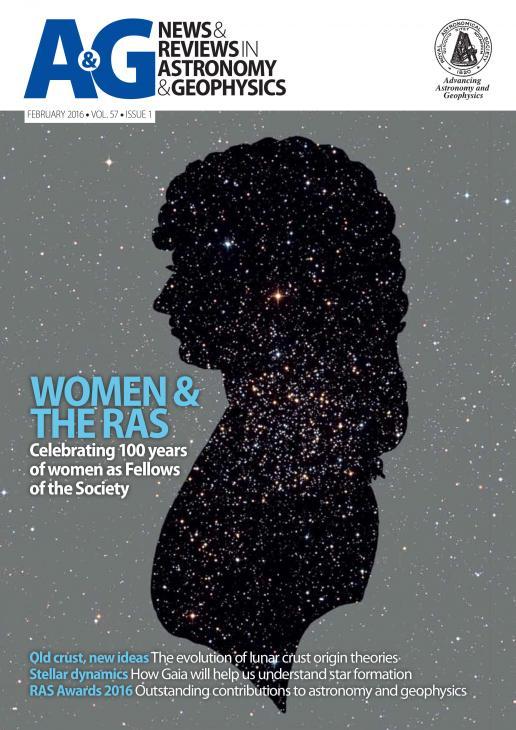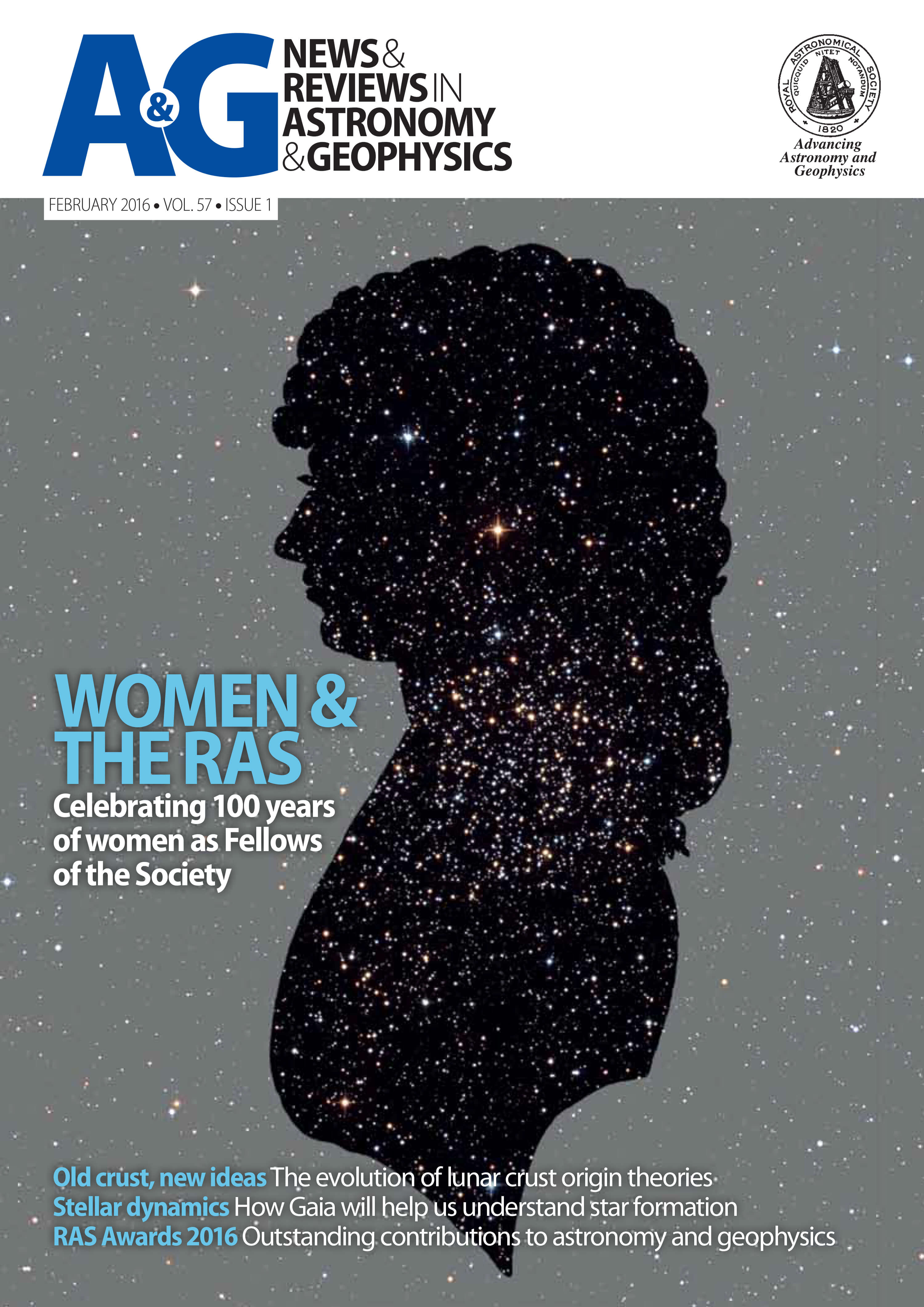 News
NewsCaroline’s cover
Our February cover is a composite made from a silhouette of Caroline Herschel and an open star cluster that she discovered in 1783 – known as “Caroline’s Rose”.
 News
NewsOur February cover is a composite made from a silhouette of Caroline Herschel and an open star cluster that she discovered in 1783 – known as “Caroline’s Rose”.

Caroline’s cover: A&G February 2016.
Our February cover is a composite made from a silhouette of Caroline Herschel and an open star cluster that she discovered in 1783 – known as “Caroline’s Rose”.
Her brother William catalogued the object as H VI.30 but it is now know by its new General Catalogue number NGC7789.
It is a large open cluster in the constellation Cassiopeia that spans about half a degree in the sky – about the same size as the full Moon – and is about 8000 light years away and 50 light years across. The cluster stars are all about the same age, having formed 1.6 billion years ago. Many of the more massive ones have evolved off the main sequence to become red giants; their presence gives a yellow tone to the cluster overall. This image was taken by Gábor Toth (Gábor Toth Astrophotography http://astro.i-net.hu).
Silhouettes were a popular means of portraiture in the eighteenth century. This cover is based on the painted silhouette of Caroline presented to the Museum of the History of Science in Oxford by Dr A E Gunther in 1986. The portrait originated in Hannover and is the only image of Caroline Herschel as a young woman; she left for England in 1772. The cover uses a simplified image; the original in the Museum has details of the delicate lace of the dress and Caroline’s curling hair.
The juxtaposition of eighteenth century imagery and modern astrophotography highlights similar contradictions in Caroline Herschel’s life. She was the first woman to earn money from blue-skies astronomical research, as we would see it today, yet she saw her role as providing help and support for her brother William and nephew John. She did not see herself as an astronomer in her own right, yet her correspondence with astronomical luminaries of the day make it clear that she was widely recognized and respected, very much as their peer. Times have changed; while it is unlikely that another Caroline Herschel would succeed in quite the same way now, it is to be hoped that she would find her own space in science to excel.
If you would like to submit an article to A&G Forum then please go here.